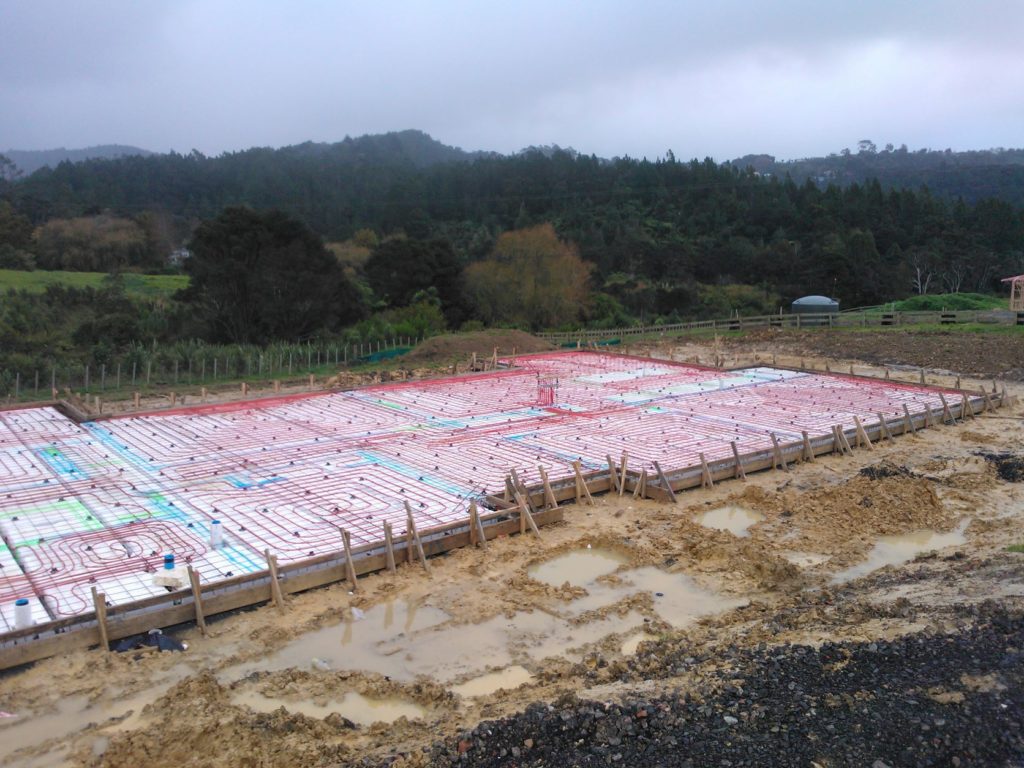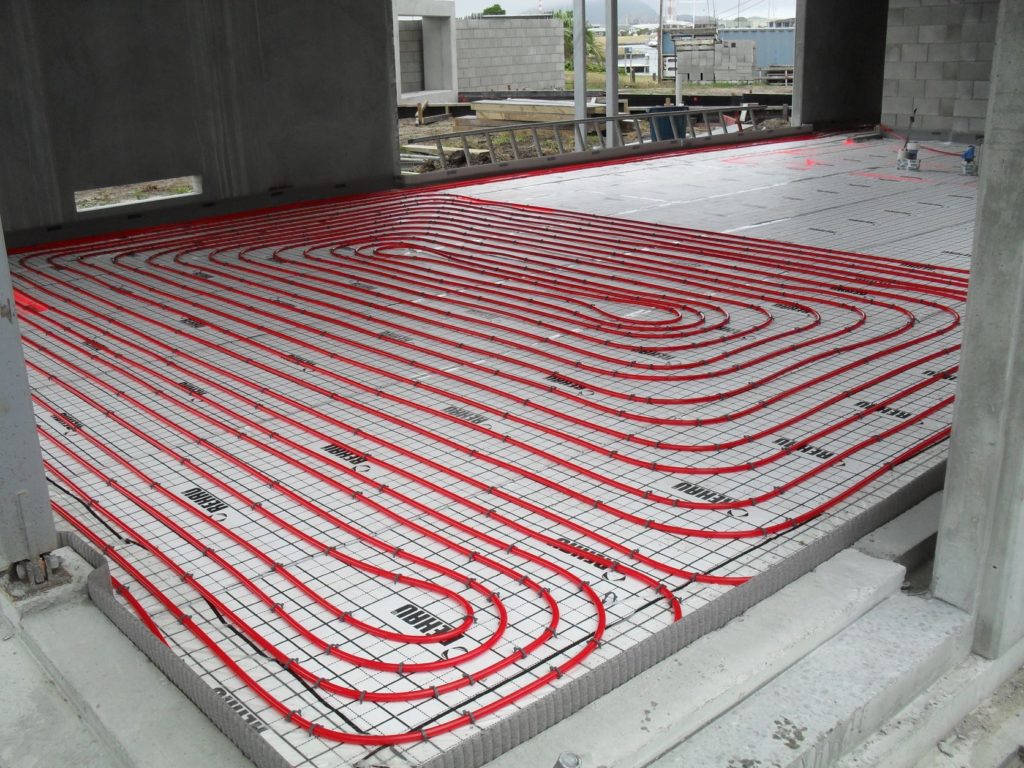Underfloor Heating
Invisible and economical
You’ll never have cold feet again! With floor heating, you enjoy comfortable radiant heat from the ground up. The floor stays comfortable all year round. Floor heating systems work with lower flow temperatures in comparison to radiator heating which can have up to 80 degrees. As a result, there is almost no convection, and the room stays free of swirling dust and has a comfortable living atmosphere.
. Not only that: there are no unattractive radiators, and you can design your interior as you wish. The lower the temperature of the heating surface and the higher the proportion of radiant heat, the greater the thermal and subjectively perceived comfort.
The comfort also results from the architectural advantages: Thanks to the invisible heating, the entire living space is available for design without restrictions. Architects open up new possibilities: Generous, light-filled window fronts, open rooms or sloping ceilings can be planned freely and without problems. With furniture and built-in cupboards, there are many more variable positioning options. Smaller rooms in particular, such as the bathroom, are given more floor space. In addition, the floor coverings can be freely selected: marble, stone tiles, parquet, laminate, cork, as well as suitable carpeting.
Structure and function of the hot water underfloor heating
A water-bearing underfloor heating system consists of plastic, copper, or steel pipes, which are usually located directly in the floor structure. These lead warm up heating water through the house and heat the respective rooms. Before the temperature in the room changes, the thermal energy first goes into the massive floor structures. These act as thermal storage that can even bridge short breaks in heating. That means: The hot water underfloor heating gives off heat even after the boiler has been switched off for a longer period of time.

Self-regulating effect of the hot water underfloor heating
Due to the large heating surfaces, the underfloor heating manages with particularly low surface temperatures. Often these are only a few degrees Celsius above the actual room temperature. If it gets warmer in the room, the difference to the surface temperature drops and the surface heating emits noticeably less heat. In contrast to radiator heating, this so-called self-regulating effect prevents the rooms from overheating, which means that homeowners save heating costs.
Different types of water-bearing underfloor heating system
Whether in a new building or a renovation: Thanks to modern laying systems, many people today benefit from the comfortably warming surface heating. In addition to the typical wet systems, milling systems and dry construction solutions are also available. These are also possible if homeowners want to expand or retrofit underfloor heating

If the underfloor heating is also to warm an old building with water, special dry construction systems are used. These usually consist of special carrier plates, thin pipes and a dry screed plate. The systems are ready available with installation heights of just 20 millimeters. They can be laid quickly and, thanks to their low weight, are also an option for older wooden beam ceilings. Since the water-carrying pipes run right under the flooring, dry-laid underfloor heating systems usually react more quickly to changing temperature requirements. No thermal storage if the heating is off, however, it does not take that long for heating up either.
Underfloor Heating laid in Screed
If an installer installs the surface heating in the wet system, he brings in the water-bearing plastic pipes over an insulation board. To ensure that the pipes are firmly in place, they are held in place by large staples or bumps in the laying plates. The screed expert then applies the screed. This stores the heat and distributes it evenly to the entire room. At the same time, it absorbs the loads from above and distributes them over the structure. So that the floor can work in fluctuating temperature conditions, there is a so-called edge insulation strip around the screed. This also decouples floors and walls acoustically, thus ensuring good sound insulation as well as taking the expansion of the warmed-up screed during the heating season. Laying in the wet system is flexible and is particularly suitable for new construction projects or core renovations. In many old buildings, it is out of the question due to the structural height and the low load-bearing capacity of the existing wooden ceilings.

